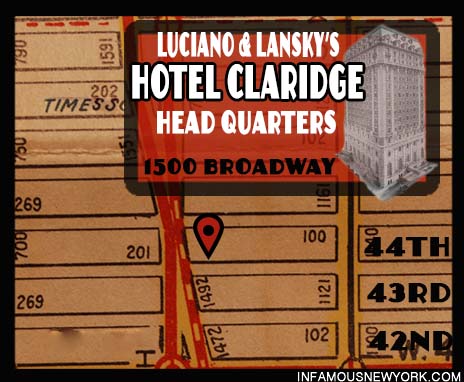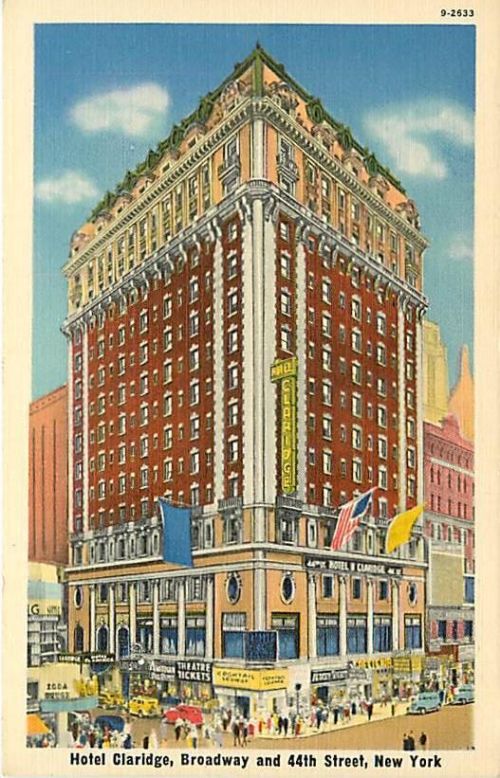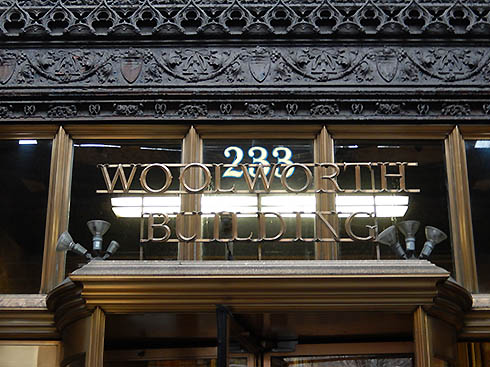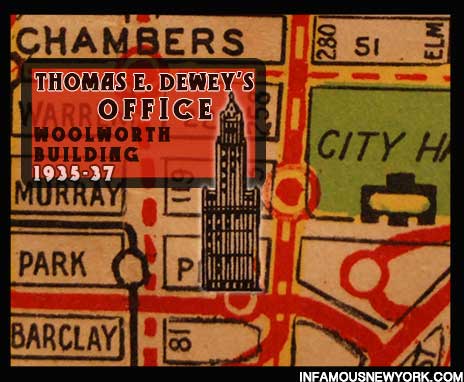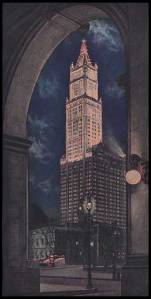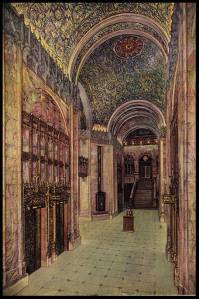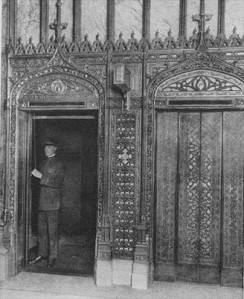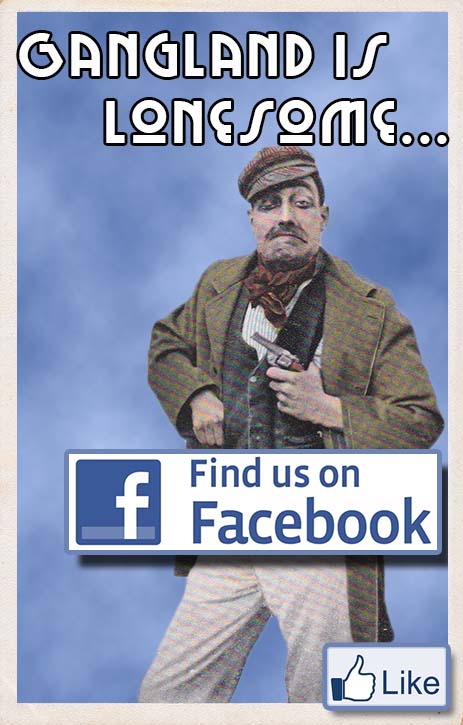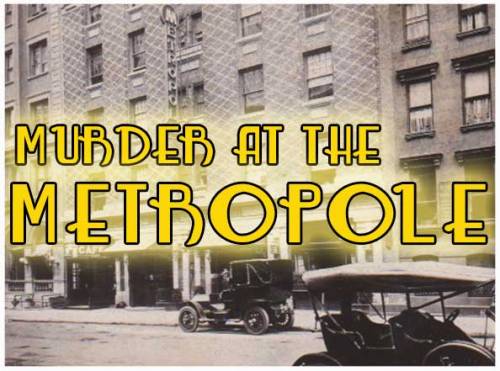
Murder at the Metropole: The Charles Becker Herman Rosenthal Case 147 West 43rd Street
Address: 147 West 43rd Street
Status: The Casablanca Hotel
By the summer of 1912, every gangster, gambler and politician in New York City wanted Herman Beansie Rosenthal dead. The pro-gambler had upset the apple cart, spilled the beans and went to the press, revealing a massive web of police corruption after the coppers smashed up Beansie’s casino- a casino that was under the paid protection of NYPD Lieutenant Charles Becker.
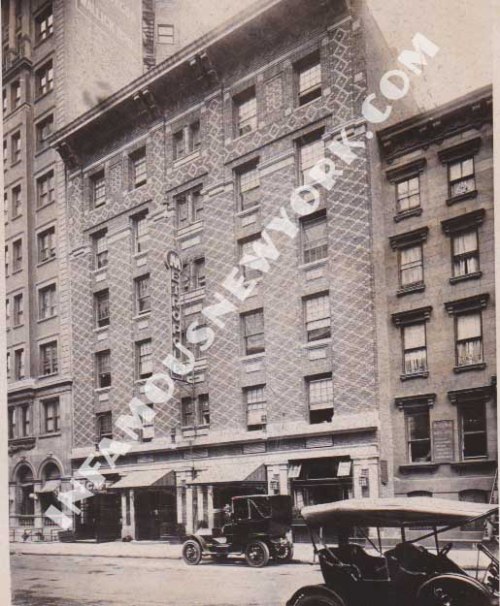
Owned by Tammany Hall powerbroker, Big Tim Sullivan,The Metropole boasted a 24 hour liquor license and a casino managed by Arnold Rothstein.
Murder at the Hotel Metropole:
The Becker Rosenthal Case
Just after Midnight, July 12, 1912, Rosenthal strolled into the Metropole Café, now Tony DeNapoli’s, with an arm full of newspapers plastered with headlines of his allegations against Lt. Becker. At 4 AM a gray Packard taxi roared up to the Metropole with a cargo of gunmen, coked to the gills, from the dreaded Lenox Avenue Gang.
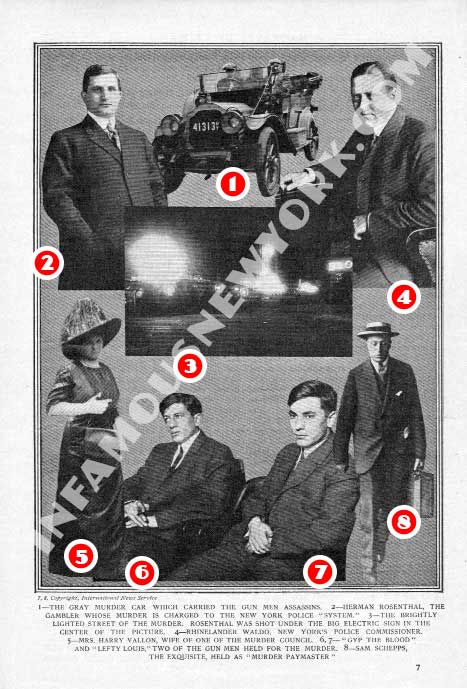
1-The Gray Murder Car which carried the gunmen assassins. 2-Herman Rosenthal, The Gambler, whose murder is charged to the New York Police System. 3- The brightly lighted streets of the murder. Rosenthal was shot under the big electric sign in the center of the picture. 4- Rhinelander Waldo, New York’s police commissioner. Mrs. Harry Vallon, Wife of the Murder Council member Frank Vallon. 6,7– Gyp the Blood and Lefty Louis, Two of the gunmen held for the murder. 8-Sam Schleps
There in the blinking electric lights of Times Square, Lefty Louie Rosenburg, Harry “Gyp the Blood” Horrowitz and Dago Frank Cirofici waited for their prey. When Rosenthal exited the Metropole, the gunmen opened fire. According Historian Mike Dash:
“… Investigation would eventually establish that at least three rounds were fired. The first bullet had missed its target and embedded itself at head height deep in the wooden frame of the Metropole’s front door. But the second had struck Rosenthal in the face, passing through his cheek and jaw…” Mike Dash, Satan’s Circus.
The murder would go on to become the crime of the century, adding yet another gritty layer to the Hotel’s gangland history.
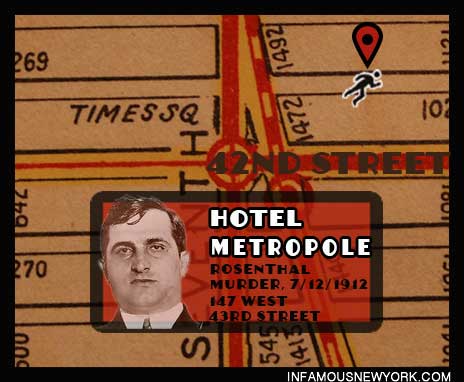
A popular gangland resort and casino, the Hotel Metropole was located at 147 West 43rd Street. It was the scene of the murder of Herman “Beansie” Rosenthal in 1912.
Up in the Old Metropole
Located a dice roll away from the Big Street, Broadway, the Hotel Metropole opened in 1910 at 147 West 43rd Street and became a nightlife nexus of the Tenderloin district known as Satan’s Circus. The first hotel in New York City with running water in every room, a pair of pro-gamblers known as the Consindine Brothers (George and Bill), operated the hotel on behalf of Tammany Hall powerbroker Big Tim Sullivan. The Metropole became the sparkling diamond of Big Tim’s hustles. Now called the Casablanca hotel, the building is one of the most storied gangland hotels in all of Manhattan.

Today, the Metropole is called the Hotel Casablanca.
The murder would leave an indelible mark on the annuals of American criminal history, even appearing in the Great Gatsby:
“The old Metropole,” brooded Mr. Wolfsheim gloomily. “Filled with faces dead and gone. Filled with friends gone now forever. I can’t forget so long as I live the night they shot Rosy Rosenthal there.”-F Scott Fitzgerald, The Great Gatsby
Bat Masterson, Damon Runyon and Nicky Arnstein
A human stew of Broadway characters called the Metropole home because of its 24 Hour liquor license, making the hotel’s cafe a hotspot for showgirls, gunmen, boxers, newspaper reporters and gamblers.
Wild West gunfighter turned New York newspaperman, Bat Masterson and his protégé Damon Runyon were regulars. Bat lived upstairs near noted cardsharp Nicky Arnstein, future husband of Ziegfeld Girl, Fanny Brice. Cole Porter would immortalize the wiseguys and cardsharps of the Metropole in his song, Ace in The Hole.
Arnold Rothstein’s Casino
Arnold Rothstein, the Brain of Broadway, managed Big Tim’s gambling parlor on the second floor. The opulent casino featured faro tables and roulette wheels. Some of the biggest crap games New York City history went down in the Metropole. It was also in the Metropole where Abe Attell, a former champion featherweight boxer, caught the attention of Arnold Rothstein becoming The Brain’s bagman and enforcer. Attell served Rothstein well during fixing of the 1919 World Series, insulating the gangster from criminal prosecution, serving as a go between for Rothstein and the Chicago White Soxs.
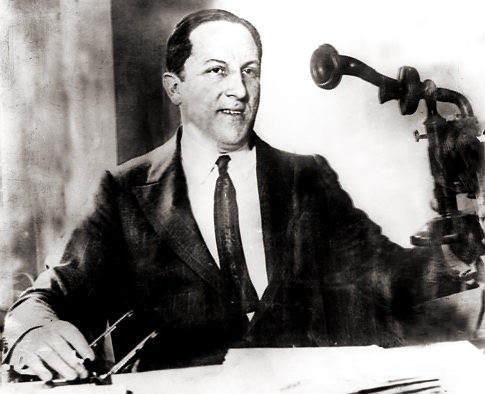
Arnold Rothstein. the Brain of Broadway, managed the Metropole’s casino.
Enter Herman Rosenthal
A small time gambler with big dreams, Herman Rosenthal became a regular at the Metropole’s all night card games. With the help of Big Tim Sullivan’s bankroll, Rosenthal set up a lavish gambling den a few blocks north at 104 West Forty Fifth Street where the gambler lived with his wife Lillian. After a police raid smashed the joint, Rosenthal turned to police Lieutenant Charley Becker, cutting the corrupt police officer in on 1/5 of the house’s take. Unfortunately for Rosenthal, letters to Mayor Gaynor’s office reported the operation. The raids on the casino continued and Beansie Rosenthal went to the Newspapers to squeal.
The Jewish Mob:
Lefty Louie, Gyp the Blood, and Big Jack Zelig
By this point Rosenthal’s enemies led by a powerful syndicate of gamblers, gangsters, and police Lieutenant Charley Becker wanted the canary dead. With the help of Lower East Side Jewish Mobster Big Jack Zelig, a contract was placed on Rosenthal’s head to be carried out by Lenox Avenue Gang members Lefty Louie and Gyp the Blood. According to Herbert Asbury:
“Gyp the Blood was a sheriff and gorilla at the cheap dances of the East Side…He possessed extraordinary strength, and frequently boasted that he could break a man’s back by bending him over his knee.”-Herbert Asbury, Gangs of New York
The triggermen struck on July 12, 1912 and all of New York reverberated in the wake.
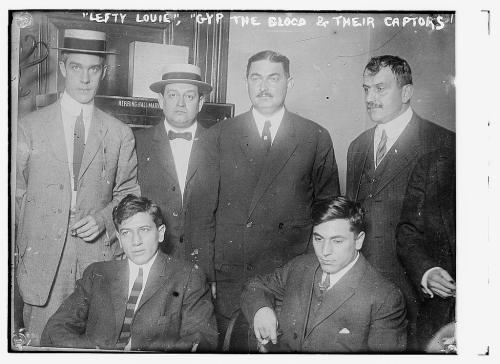
Two eastside gunmen (seated), Harry “Gyp the Blood” Horrowitz and Lefty Louie Rosenburg, were sentenced to death for the slaying of Herman Rosenthal.
The Chair For Charley Becker
Lt. Becker and the Lenox Avenue gang were found guilty of the crime and were sent to the electric chair at Sing Sing. The Metropole Hotel still stands today and is known as the Hotel Casablanca.
 NYPD officer Charles Becker was sentenced to death for the crime.
NYPD officer Charles Becker was sentenced to death for the crime.

